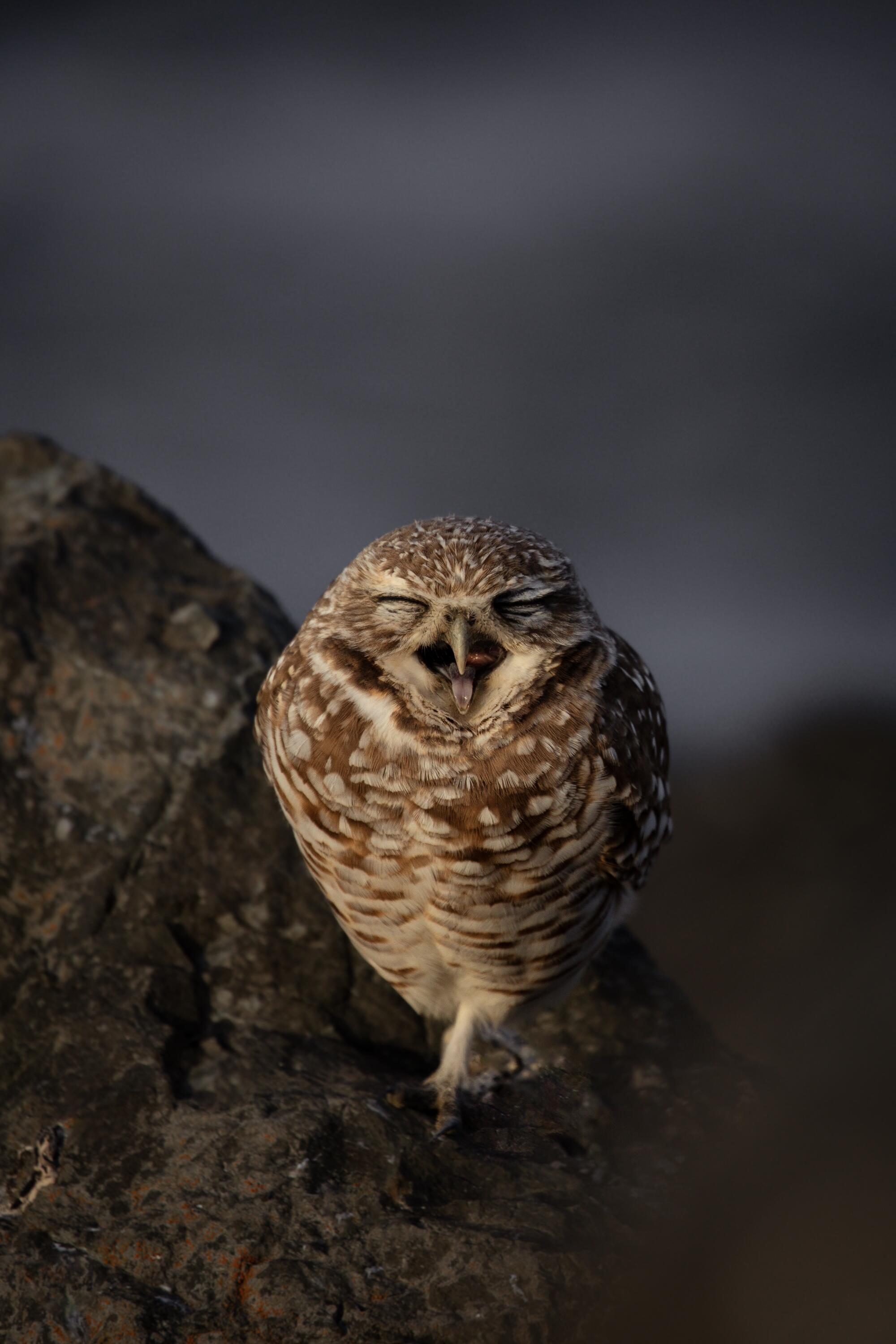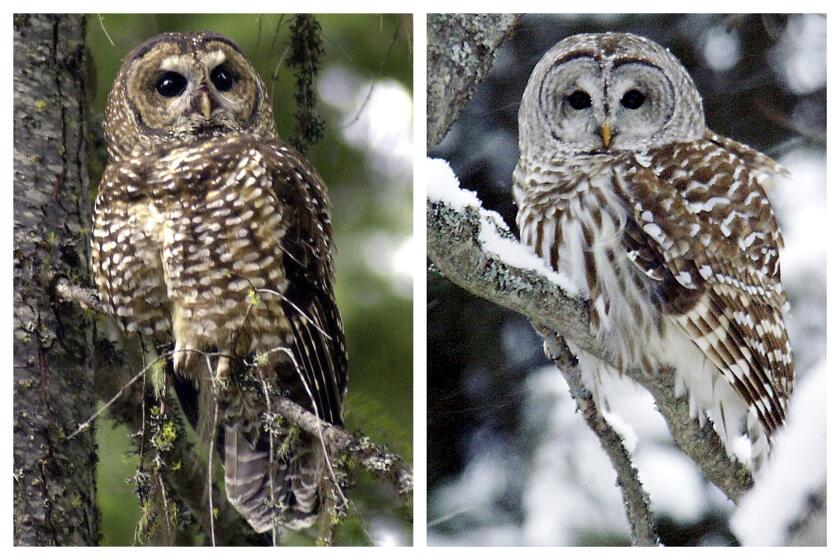
Western burrowing owls are diminutive, adorable and goofy — and conservation organizations have renewed calls for the state to protect them before it’s too late.
Now, more than 20 years since a formal request was made, California wildlife officials appear to be listening.
The California Department of Fish and Wildlife this week recommended that state wildlife policymakers consider a petition to list the owls as endangered or threatened.
Aggressive and impactful reporting on climate change, the environment, health and science.
It’s the first of several steps the native underground nesters need to clear to earn protection under the state Endangered Species Act. It doesn’t mean it’s warranted, but that it could be warranted.
So while the species’ fate is in no way settled, the groups pushing for the designation are hopeful. This petition, submitted in March, has already soared farther than one launched just over 20 years ago.
“We’re kind of in an emergency situation here,” said Jeff Miller, a senior conservation advocate for the Center for Biological Diversity, who penned both petitions. “It would be kind of shocking if they don’t get some kind of protections.”
So what changed?
Conservationists say the situation is even more dire for the owl. They were once one of the state’s most common birds, present “pretty much everywhere” there were open, low-elevation grasslands, according to Miller.
But “we are down to very low numbers,” Miller said. As a breeding species, it’s “difficult, if not impossible, to get back once you lose it from a specific locality.”
Around San Francisco Bay, there are about 25 breeding pairs, down from roughly 1,000 pairs in the region’s South Bay area alone roughly 30 years ago, he said.
Miller describes the owls as “eggs on legs” because their round head and body sit atop long, skinny legs. They stand just 10 inches tall, flash bright-yellow eyes and, as their name suggests, live underground. “They can seem kind of goofy,” Miller said.

Goofiness aside, conservationists say, incorrect assumptions about the owls’ behavior have been righted, and political winds have changed — fueling hope that this petition has a chance.
Habitat loss remains a top concern. Developers often eye owl habitat for condos and golf courses.
Sprawl development and control efforts targeting ground squirrels, whose burrows the owls appropriate, have pushed the owls out of the grasslands they dwell in. Renewable energy projects and, in some cases, agriculture have also infringed on their digs.
Pamela Flick, California program director for Defenders of Wildlife, a co-petitioner, said the best available science shows the owls have vanished or are close to vanishing in nearly 30% of their range in the state, calling it “really, truly concerning.” Other petitioners include the Burrowing Owl Preservation Society, Urban Bird Foundation, Central Valley Bird Club, and San Bernardino Valley and Santa Clara Valley Audubon societies.
When the first petition was submitted in 2003, it was argued that owls in population strongholds such as the Imperial Valley would simply be able to fly to other places in the state and boost dwindling populations.
That turned out to be incorrect. Miller said decades of banding and tracking the owls has shown they typically don’t set up shop and breed elsewhere if banished from an area.
The federal government has proposed a plan to shoot 500,000 barred owls to save another owl species that inhabits California. Foes say it’s a reckless plan.
Two key players in the petition’s future are the state Fish and Game Commission and the California Department of Wildlife. The department implements and enforces rules made by the commission, as well as conducts research to inform the commission’s decisions.
Miller said it was a “very different political climate” when his group and others brought the first petition.
Earlier this year, he told The Times that the commission in its early days managed with hunting and fishing as a top priority. Now, he said, there’s greater emphasis on conserving vulnerable species.
There’s another twist too: Rather than push for statewide protection, Miller said, petitioners are focusing on the most imperiled owl populations. Conservationists are seeking endangered status for owls in the Bay Area, as well as central-western and southwestern California. They’re seeking threatened status for those in the Central Valley and southern desert.

Parceling out ranges could also mitigate pushback. Some of the areas where the owls are doing best — such as the Imperial Valley and the southern Central Valley — are in manipulated agricultural land. “We don’t want to be at odds with an economic interest if we don’t need to be,” Miller said.
Ultimately, the decision would rest with the Fish and Game Commission. It could opt to list certain populations, or none, or go statewide. The birds are not listed under the federal Endangered Species Act.
Conservation groups expect the commission to vote on whether to accept the petition Oct. 10. If it does, the owls will become a “candidate” species, which affords them the same protections as if they were listed under the state Endangered Species Act while a 12- to 18-month status review moves forward.
A new method of rearing California condors at the Los Angeles Zoo has resulted in a record-breaking 17 chicks hatched this year.










